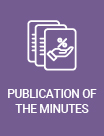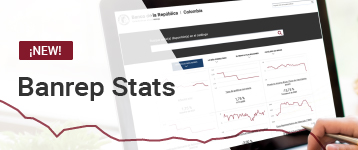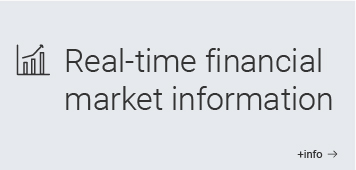Minutes of the Meeting of the Board of Directors of Banco de la República Held on November 28, 2014
A regular meeting of the Board of Directors of Banco de la República was held in the city of Bogotá D.C. on October 30, 2014. In attendance were Mr. Mauricio Cárdenas Santamaría, Minister of Finance and Public Credit, Mr. José Darío Uribe Escobar, Governor and Managing Director of Banco de la República, and Board Members Carlos Gustavo Cano Sanz, Ana Fernanda Maiguashca Olano, Adolfo Meisel Roca, César Vallejo Mejía and Juan Pablo Zárate Perdomo.
These minutes contain a summary of how Banco de la República’s technical team views the macroeconomic situation (Section 1), followed by a review of the key policy discussion points considered by the Board of Directors (Section 2).
A more detailed description of the macroeconomic situation prepared by the technical staff from the Central Bank is provided in the data section of the September 2014 edition of the Inflation Report, as well as in the statistical appendix.
1. MACROECONOMIC CONTEXT
Regarding the macroeconomic context, the technical staff highlights the following elements:
- The information ratified the weak growth of world economy. United States showed a good performance, while in the euro zone the product recorded a modest increase. In most Latin American countries, the growth of the GDPs were lower than their historic averages. All this considered, the forecast of a weak growth in the average of our commercial partners for 2014 and 2015 was maintained. External demand will continue to be slow next year, except for the economy of the US.
- The prices of oil fell strongly. This behavior, which pressures world inflation downwards, could also contribute to encourage spending, especially in those countries which are importers of oil. For economies which are exporters of oil, the fall in these prices generates deterioration of the terms of trade and therefore a reduction of their national income.
- Facing the prospect of low inflation in the United States and greater risks of a slowdown in world trade, on average, the market expects the first increase in the interest rate of the FED to take place towards the end of 2015. This has happened together with a slight decreasing trend in the long-term interest rates.
- The measures for risk premia of various countries in the euro zone as well as of some emerging economies continued to increase, although moderately. The flow of capital toward these countries has reduced and their currencies have depreciated against the dollar.
- For Colombia, the fall in the international price of oil has implied deterioration in the terms of trade, in spite of the fact that the international prices of coffee continue to be high. Should this trend continue, the national income will continue to be affected negatively.
- Weakness in the external demand and the lower international prices of mining commodities have been reflected on the behavior of the exports of the country, in dollars. So far this year until September, the total external sales have fallen 1.9% on a yearly basis. Those of agricultural origin have presented high increases due to the exports of coffee and banana, while those of mining origin and those of other sectors have decreased. In the accumulated value from January to September, the imports in dollars have grown 7.4%, as explained by the increase of raw materials, those destined to consumption, and to a smaller extent, those of capital goods.
- The new figures of foreign trade validate the projection of a greater deficit in the current account for 2014: between 4.4% and 4.8% of the GDP. This widening implies a smaller current surplus in the mining sector and supposes that the wide use of the external savings by the remaining sectors would have continued in the second half of the year.
- As for Colombia’s economic growth, the most recent indicators of supply and demand suggest that in the second half of 2014 the GDP would grow at a good pace, although less than the one registered in the first half of the year. The main impulse would stem from internal demand. This is suggested by the behavior of retail sales, consumption credit, consumer confidence index, and that of the labor market, which indicate that consumption would maintain a strong momentum. The increase in the external purchases of machinery and transportation equipment, and the trend registered by civil works, anticipate a good performance of investment, although at lower rates than those observed for the first half of the year. The figures of foreign trade indicate that imports would increase more than exports, and with this the balance of trade would contribute negatively to the product.
- In October, banking credit continued to slow down, but still recorded annual rates larger than the nominal GDP estimated for the present year. The lowest dynamism was that of private companies. In the same period, the slowdown in mortgage loans was more than compensated by the recovery of the consumption portfolio, therefore household credit accelerated. All this takes place in a context of weak transmission of the increases of the benchmark interest rate towards the loan rates.
- Given the aforesaid, the technical staff maintained the projection for the range for annual economic growth for all of 2014 between 4.5% and 5.5%, with 5% as the most probable figure.
- Regarding prices, as expected by the technical staff, annual inflation increased from 2.86% in September to 3.29% in October. This is explained by acceleration in the group of foods and regulated goods, and the low base for comparison of the CPI from a year before. The four measurements of core inflation increased, and their average posted at 2.76%.
- So far this year until October, accumulated inflation reached 3.25%. With this result, by the end of 2014 inflation will post in the upper part of the target range for this year (between 2.0% and 4.0%). Analysts’ inflation expectations derived from public debt bonds on a one year horizon as well as for 2, 3, and 5 years, are all anchored close to the target.
- So far, depreciation of the peso has been partially transmitted to the CPI of tradable goods without food or regulated goods. However, should the depreciation persist, this could be transmitted to a greater extent to internal prices, generating greater inflation expectations.
In summary, aggregate demand continues to show a strong growth in a context close to the full use of the productive capacity. As was expected, inflation increased, a fact explained by the greater pace of increase in the prices of food, which is expected to be transitory. At the same time, inflation expectations remain stable, and are somewhat over 3.0%. This takes place within an environment of deterioration of the terms of trade and of uncertainty about the recovery of the economic activity worldwide together with the cost of external financing, which are factors that may impact aggregate demand as well as the exchange rate.
2. DISCUSSION AND POLICY OPTIONS
The Board of Directors unanimously decided to maintain the benchmark interest rate at 4.5%.
The members of the Board highlighted the strong dynamism of the Colombian economy, and a more adverse external environment in the horizon of monetary policy.
The strong fall in the international prices of oil and other commodities consolidates a weak external scenario that will affect the performance of the Colombian economy negatively during 2015. As was expected, the Colombian peso has depreciated, which may buffer the effects of the weakness of external variables on the output gap, and might have an effect on short-term inflation. The floating exchange rate regime has proven to be an efficient mechanism to absorb external shocks.
Inflation expectations are anchored to levels close to the target. The average of the core inflation indicators converges towards that target, while total inflation registers a higher value due to transitory shocks in supply.
Under these conditions, the Board Members agreed to maintain the benchmark interest rate unaltered, as well as to continue monitoring the performance of the economy.
3. POLICY DECISION
The Board of Directors unanimously decided to maintain the benchmark interest rate at 4.5%.














.png)

































